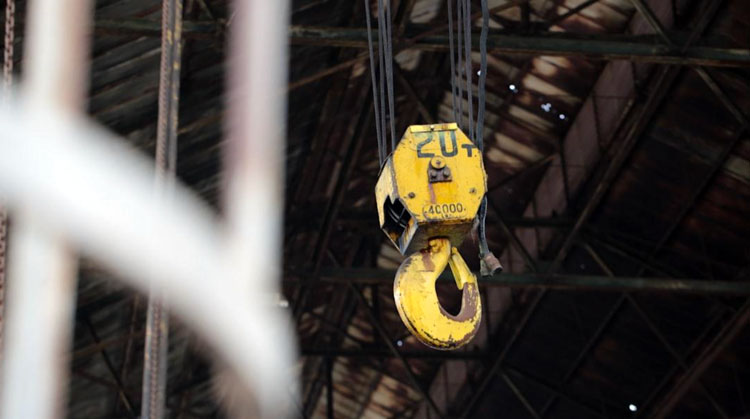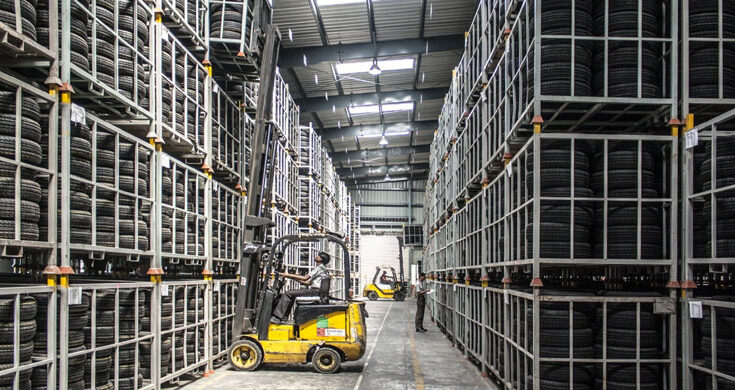Material Handling
Material handling solutions optimize warehouse operations and improve supply chain efficiency. Developing effective strategies for material handling becomes necessary. These solutions encompass various processes, equipment, and systems designed to safely move, store, and control materials throughout the supply chain.
A better understanding of the key factors that contribute to their effectiveness can help organizations streamline operations, reduce costs, and improve productivity. Here are eight factors that influence the efficacy of material handling solutions.
Strategic Warehouse Layout
An intelligently designed layout minimizes unnecessary travel time for employees and materials, while maximizing space utilization. Carefully analyzing product flow, storage requirements, material handling equipment, and entry-to-exit movement patterns. Exploring various engineered warehouse solutions can further refine material handling practices. Such services integrate innovative technology systems into existing frameworks, improving flexibility and scalability.
When warehouse zones, such as receiving, storage, picking, packing, and dispatch, are placed logically, it improves process speed and reduces backtracking. Utilizing vertical space through racking systems and mezzanines enables higher storage density without expanding floor space. A well-structured warehouse layout boosts accessibility, reduces handling times, supports accurate order fulfillment, and contributes to long-term operational efficiency.
Automation and Technology Integration
Automation enables businesses to achieve higher levels of efficiency, consistency, and accuracy throughout their operations. Modern warehouses adopt robotics, conveyor systems, and automated guided vehicles (AGVs) to streamline material movement and reduce manual handling. These technologies decrease reliance on physical labor and minimize human error, leading to more precise order processing and improved workflow reliability.
Integrating warehouse management systems (WMS) provides real-time tracking of inventory, improves visibility, and supports accurate demand forecasting. Data analytics tools and digital dashboards help businesses monitor performance metrics, identify process bottlenecks, and make informed decisions. The use of automation allows companies to respond quickly to market shifts, improve order fulfillment speed, and maintain competitiveness. Organizations improve efficiency, reduce operational costs, and optimize material handling performance.
Employee Training and Safety Practices
A skilled workforce remains a foundation of effective material handling solutions, regardless of technological advancements. Regular and structured employee training guarantees that staff understand best practices, operating procedures, and safety protocols related to equipment and warehouse environments. Proper training increases productivity by equipping employees with the knowledge to perform their tasks correctly and confidently.
Safety-focused training promotes the safe use of equipment, such as forklifts, pallet jacks, and conveyors. Emphasizing ergonomic handling techniques lowers the risk of musculoskeletal injuries and supports long-term employee well-being. Establishing a strong safety culture encourages employees to take responsibility for maintaining a secure work environment, report hazards, and follow guidelines consistently. Organizations that invest in training and safety experience reduced turnover, improved morale, and higher operational efficiency.
Inventory Management Techniques
Effective inventory management guarantees that the right products are available in the right quantities at the right time, supporting seamless material handling and customer satisfaction. Implementing strategies such as just-in-time (JIT) inventory minimizes excess stock, reduces storage costs, and optimizes warehouse space utilization. JIT encourages efficient stock flow and supports better cash flow by preventing capital from being tied up in unused inventory.
Companies can employ barcoding and RFID systems, which improve visibility across the supply chain and reduce manual record-keeping errors. Monitoring inventory turnover rates provides valuable insights into demand patterns, allowing businesses to forecast future needs and adjust purchasing plans. ABC analysis, safety stock calculations, and cycle counting procedures contribute to more structured inventory control.
The Use of Proper Handling Equipment
Using appropriate handling equipment maximizes efficiency, safety, and productivity in material handling environments. Forklifts, pallet jacks, conveyors, and lift trucks must be carefully selected based on the size, weight, and nature of the materials being transported. Choosing specialized equipment for specific tasks improves workflow speed and reduces the physical strain placed on employees.
Equally important is the regular maintenance and inspection of equipment for optimal performance and to prevent unexpected breakdowns that could disrupt operations. Preventive maintenance schedules, proper storage of tools, and punctual replacement of outdated equipment contribute to a reliable handling system. Investing in lift-assist devices or adjustable workstations supports employee health by minimizing fatigue and reducing the risk of injuries.
Real-Time Data and Analytics
Access to real-time data enables agile and informed decision-making within material handling operations. Businesses that utilize analytics gain the ability to respond quickly to shifting demand, supply chain challenges, and unforeseen operational issues. Implementing digital sensors, IoT devices, and monitoring systems allows continuous tracking of equipment usage, inventory levels, and workflow efficiency. Analyzing this data helps identify patterns, inefficiencies, and areas for improvement, which results in more precise planning and improved productivity.
Data-driven insights can guide decisions regarding labor allocation, equipment investments, and layout adjustments, resulting in cost efficiencies and improved performance. Sharing performance metrics with employees and stakeholders encourages transparency, collaboration, and proactive problem-solving. Organizations that adopt real-time data analytics are better equipped to adapt to industry changes, maintain high service levels, and optimize their material handling processes with greater accuracy and confidence.
Flexible and Scalable Solutions
The ability to adjust material handling solutions to maintain operational efficiency and competitiveness. Flexible and scalable systems enable businesses to respond to fluctuations in demand, customer expectations, and supply chain dynamics without incurring excessive costs or disruptions. Modular racking systems can be reconfigured to accommodate new products or increased inventory volumes, and dynamic warehouse layouts that support operational changes.
Establishing partnerships with logistics providers that offer adaptable service agreements allows organizations to manage distribution more strategically. Material handling processes remain resilient in the face of business expansion, seasonal demand shifts, or unexpected challenges.
By prioritizing scalability, companies can upgrade equipment, integrate new technologies, or restructure workflows more easily. Implementing adaptable practices supports long-term growth, improves responsiveness, and strengthens a company’s ability to operate efficiently through continual change.
Ongoing Evaluation and Continuous Improvement
Continuous evaluation and improvement sustain effective material handling operations. Regular performance reviews, audits, and process assessments help organizations identify gaps, inefficiencies, and opportunities for enhancement. Establishing key performance indicators (KPIs) enables companies to measure progress against goals, monitor productivity, and make data-driven adjustments when needed.
Encouraging open communication and feedback from employees allows valuable frontline insights to contribute to operational improvements, particularly regarding equipment usability, workflow challenges, or safety issues. Implementing ongoing training, technology updates, and process refinements cultivates a culture focused on growth and innovation. Organizations strengthen competitiveness and maintain high standards in logistics and supply chain performance.

By focusing on these eight factors, organizations can capture efficiencies that improve their operations and drive success. The importance of layout, technology integration, employee training, inventory management, equipment choice, data analytics, flexibility, and continuous improvement can all lead to a more organized and effective material handling system.











